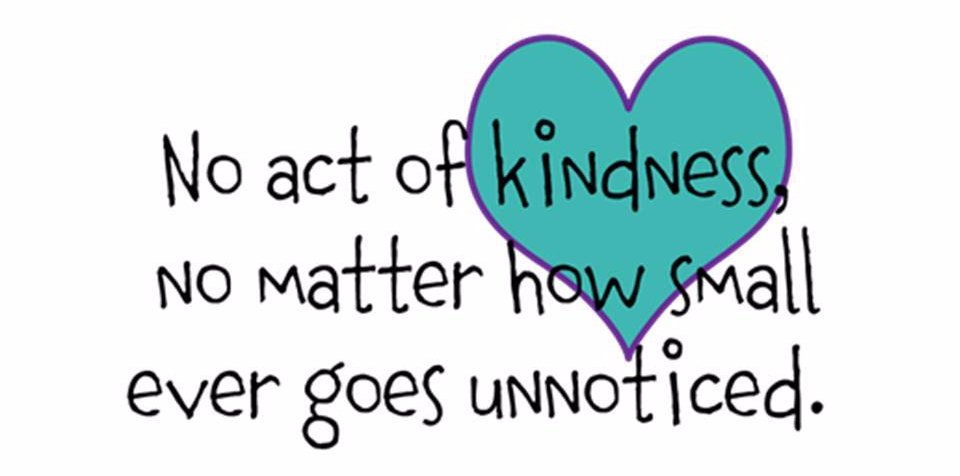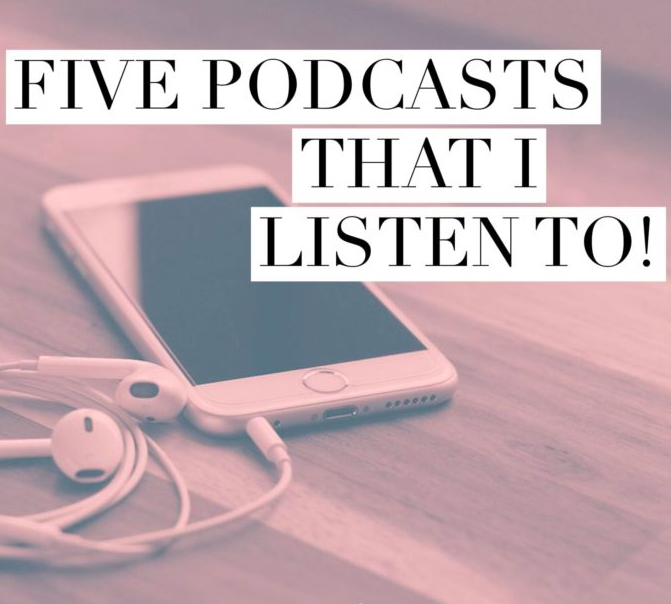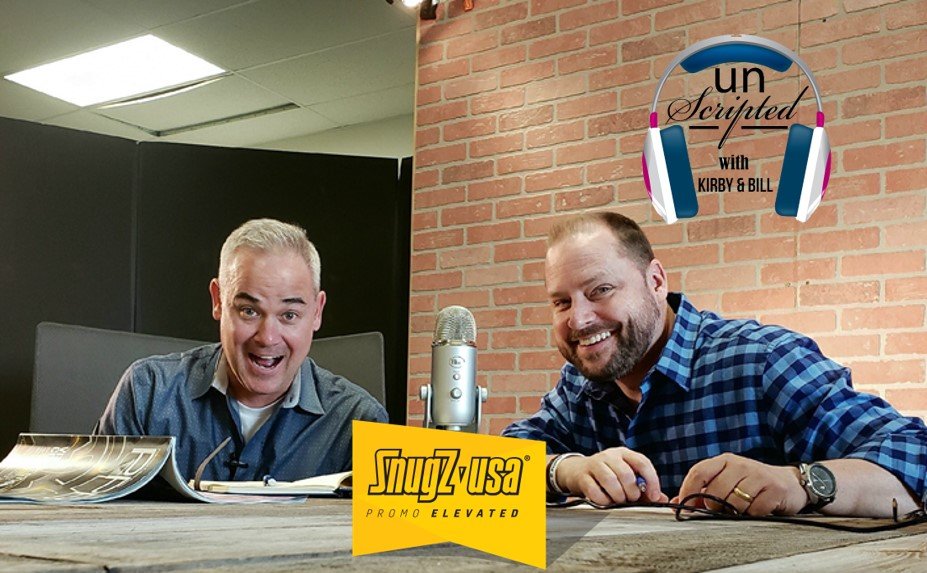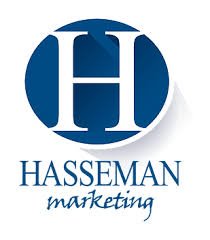by Kirby Hasseman
One of the best things about being in sales today is there are so many tools to help us be successful. We have CRM’s, automated marketing tools, email, content marketing, texting and so much more. It’s a great time to be a sales person! And yet, so many salespeople still struggle to consistently grow. Why is that?
They don’t use all of the tools in the sales tool box.
Though there are many new (and shiny) sales tools, most sales people fall into the habit of using the one that is most comfortable to them. We send the email because it’s easier than picking up the phone and making the call. We post a special to Facebook because that’s less intrusive than stopping in to see the client face to face. We choose the path that is less painful for us. Then we wonder why our phones are not ringing off the hook.
I get it. Sometimes it’s easier to send a message than to stop in. It’s easier and more comfortable to send an email. But when it comes to sales, it’s important to use all of the tools in the tool box…not just the one we like the best!
I love social media. But sometimes it’s important to get out and sit across from your customer.
I lean on email (sometimes too much). But after two or three emails, it’s often so much easier to explain something over the phone.
Texting your customer can be quick and easy. But it’s also amazing to get an actual thank you card in the mail.
My advice is simple: mix it up. Look at all of your tools and make sure you are using the ones at your disposal. Which one do you lean on the most? Which ones do you ignore?
Make sure you never miss an update or a piece of content (it’s just one of our tools). You can find all of our content at our blog here. Oh…and if you want to learn more about us, check out our About Us page here.
by Kirby Hasseman

I feel confident in saying one thing. The world could use more kindness.
Kindness has always been important. But in a world where “everyone has a voice,” we certainly see voices that are unkind more often. People have an opportunity to spew hate whenever they want. Combine that with a 24 hour news cycle where (it seems) that the most mean spirited get rewarded with airtime, and it can seem the world is more divided than ever.
In that world, Kindness really is a superpower. So here are 3 Posts that remind us about the Power of Kindness.
Kindness Is A Super Power
We all want to make an impact. Most of us want to make the world a better place. I think that is why we like Super Hero movies. We love the idea that someone can “save the day.” It turns out you can. In this post, written in July of 2018, I talk about how each of us can be a Super Hero. We just have to be willing to put on the cape! Read more here.
Simple Acts of Kindness Matter
I often put off doing the “little things” because I don’t think they will matter. I don’t send that text because the person might be too busy. In this post, I hope you learn from a simple example. Simple Acts of Kindness do matter. Send the card. Send the text. Reach out. Read more here.
What Kind Words Can Do
Finally…from the mouths of babes. Last year, I got a note that really brightened my day. Sometimes, when we most need it, a simple message can help us to keep going. This was certainly the case with this note from a 6 year old named Bailey (and her mom). Thanks Bailey and Sarah! You can learn more about that here.
In each of these cases, the cost of entry is small. We think that if we want to change the world, we need to do something huge. But you can start today with a simple act.
Hold the door. Send a note. Smile.
Spread some kindness today.
Make sure you never miss an update! You can find all of our content on the blog page here. Oh…and if you want to learn more about us at Hasseman Marketing…check out our About Us page!
Finally, we send out one email per week with all of the content in one place. You can become a VIP and get that email by signing up here.
by Kirby Hasseman
One of the best pieces of advice I got when I first got in the promotional industry is simple. “The cost of a promotional item is not determined at the point of purchase. It is determined at the point of usage.” To translate into simple terms, it means “you get what you pay for.”
The cost of any item matters. Regardless of what you are going to purchase, whether it’s a car, a refrigerator, or a branded t-shirt, you have a budget. It’s important to stay smart about your money. And this blog is not about trying you to spend more. I cannot tell you how many times I have told a client, “You can do that. But if it was my money I would not!”
That being said, I would like to make the case that there are times when spending a little more makes a huge difference for your brand. It’s the difference between the item being in your client’s kitchen or the landfill. It might determine whether your logo is in the closet or at Goodwill.
ButterSoft T-shirts
One of the places I think it makes the most sense to upgrade is on t-shirts. Yes, we can all still get you the “promotional t-shirt.” These are the cheap, scratchy, ill-fitting shirts that our industry was known for for years. And there is (probably) still a place for them. But would YOU wear them? The answer is simple…not if you don’t have to! So why would your clients? If you want your clients to want to rep your brand, give them a shirt they get excited about. Yes, it costs more. Yes, it’s worth it. When we did our first “soft” shirt, we never looked back. Now people tell us that our shirts are their favorite shirts to wear. THAT is what you want your customers to say to you.
Premium Beach Towels
Studies tell you that the average lifespan of a beach towel is 7 years. At my house, I think that is low. A nice beach towel is not a cheap branded item…but it’s worth it. Not only do your customers, employees, and prospects keep them for years, but they tend to use them on a fun occasions. That means your brand is being tied (with a quality feel) to some good times in the person’s life. That, my friends, is a good place for your brand to be.
Vacuum Sealed Tumblers
If you want to reach just about everyone with a branded item, drinkware is a great space to live in. You don’t have to worry about gender, sizes, or many other factors. Everyone drinks something. But don’t go cheap…not if you want someone to use your drinkware! This does NOT mean you need to buy a branded Yeti product. You shouldn’t and here’s why. But there are some great Vacuum Sealed Tumblers in the promo world that are amazing. These are the branded drinkware items you targets will use over and over again.
Custom Calendars
Calendars continue to be a very cost-effective way to reach customers every day of the year. But the trend is that stock calendars slip. But if you want to buck that trend and get in front of clients all year around, think custom. When you create a cool custom calendar, you get your “who, what where” message on the wall of the client…and it goes even deeper. Essentially you hand your brochure on walls all over. Yes, custom is a bit more expensive…but in most cases it’s very worth it.
Personalization
If you want to make sure someone keeps one of your branded premium promotional items, put their name on it. It’s as simple as that. There is nothing we humans like to hear or see as much as our own name. It’s music to our ears. When you have the chance, add personalization to your branded merchandise and you will expand your impact. Yep…it costs more. And yes, it’s worth it.
Here’s the thing, there is still a space for less expensive promotional items. We get it. But if you want to have more impact for your brand (you do right?), and create less crap in a landfill, think about doing better SWAG.
It’s true in every area of life. You get what you pay for.
Make sure you never miss an update! Check out our blog page each and every day here. Oh…and sign up for our VIP newsletter here.
by Kirby Hasseman

While I love to read and listen to books, the explosion of podcasts have made it easier to listen to new and interesting voices every day. This growth in content is not only great for entertainment purposes, it’s also a new way to continue to grow personally and professionally. And while I listen to many podcasts here and there, the ones I am most committed to are on my phone. I have subscribed.
This list is occasionally updated, but these are the podcasts I listen to on my phone…right now.
Akimbo by Seth Godin
In the Akimbo podcast, marketing legend and thought leader Seth Godin takes on a topic and digs deep. He is thoughtful and edited. I like this one because it is so well researched and thoughtful…like Seth Godin himself. He takes on everything from our political system to our education system…and everything in between. Here is just one episode about why you should write a book…and yes it inspired me to write another!
Ed Mylett Max Out
Ed Mylett is every where right now and you can find this content on Youtube and other forms too. But I love this in a podcast form. Ed is thoughtful, positive, and inspirational and I think he has become a better interviewer as well. Sometimes he gives his own take on success and growth, but often he interviews a diverse list of guests including this most recent interview with WWE Superstar Seth Rollins.
GaryVee Audio Experience
It should come as no surprise that I listen to Gary Vaynerchuk! I talk about him all of the time! His podcast can be overwhelming as they post new content every day. Sometimes it strikes me and sometimes I pass by. But that’s actually kind of cool to me. Often I come across something that I needed to hear right then…and it re-ignites me in a powerful way.
PromoCorner
In the Promo Industry, you really need to subscribe to PromoCorner! Yes, it houses the unScripted podcast with Bill Petrie and I (and I give 7 Lessons I have learned from that here). But in addition the Industry Insider podcast comes out on that channel too. Good stuff.
SkuCast
The SkuCast podcast is the official podcast of Commonsku. While this company and this podcast is targeted at the Promo Industry, I don’t think it only provides value there. If you are a marketer or an entrepreneur (or both) you will likely find interesting takeaways from this one. I really loved the recent episode about the 5 C’s of Creativity. Bobby Lehew and Mark Graham spent some time digging into what creativity is and how to define and manifest it. Loved this one.
So those are the podcasts that are currently on my phone. What podcasts am I missing? What is the next great thing I should subscribe to? Let me know. Oh…and if you want to listen to He Said She Said (the official podcast of Hasseman Marketing), just check back to our blog page each week. Amy and I take on a ton of different topics. Listen in and let us know what you think!
by Kirby Hasseman

For over 3 years, Bill Petrie and I have been sharing our opinions on the marketing, branding and promotional products world on the unScripted podcast. Every Friday, Bill and I connect through the magic of technology, and discuss trending topics in our world. We call it unScripted, quite simply, because neither of us knows what the other is going to bring up so you get an honest, unedited view of our opinions and takes on industry topics.
I am proud of the podcast for several reasons. We have been recognized with awards (humble brag). We have received kind words from our peers. And hey, it’s been fun! But the journey has taught me quite a bit as well. So, if you are interested in starting a podcast or any other kind of content, here are some lessons I have learned from doing the unScripted podcast with Bill Petrie.
Consistency is King
One of the things I am probably most proud of is that we push play each week. As I write this, it will be week 162 of the unScripted podcast. That means we have put out a podcast for 162 weeks in a row. It’s a commitment. But it’s that consistency that has not only built an audience but has helped Bill and I grow. We got better at podcasting. We got better at choosing topics. It’s just like exercise. It’s about stretching and working those muscles that make you stronger.
Have Someone Who Pushes You
I am a believer in consistency. But we would have never made it through this many episodes without Bill driving me. It’s so powerful to have someone who helps to keep you on track. Bill has been an incredible teacher, coach and friend through this and I appreciate it. If you want to try something big, and crazy and hard (and you should), it’s great to have someone who pushes you and lifts you up. Thanks Bill.
Be Authentic and Transparent
I almost did not add this one because it’s almost cliche at this point. But if you want to create something long term, it’s nearly impossible to be someone you are not. Sooner or later, your real opinions will come through anyway! So be willing to put yourself out there.
Have the Courage of your Convictions
Some of the most interesting discussions we have had on the podcast (and then after) have been when Bill or I said something that upset people. While that is certainly NOT our goal, we do want to create discussion and thought. Whenever this happens, Bill and I both take the time to be introspective about our statements. Do we really think that way? If not, I think both of us are willing to say “Nah…I was wrong.” On the other hand, if we still feel strongly about something, I think that’s important too. Despite the reactive culture we have right now, I think we need to stand up for what we think as well. Trust me when I say, sometimes that is easier said than done.
Lift The Other Person Up
Partnerships of any kind can be hard. With that in mind, remember if you start something like this that “you are in the service industry.” It is really important that neither Bill nor I worry too much about credit. That is easier said than done! We all have healthy egos…and we all want recognition. But if you want a partnership to last remember that it should not matter who gets the credit.
Continue to Try New Things
If you create something that requires consistency, there is the chance you can get in a rut. That’s why it’s so important to be willing to try new things. Be willing to experiment with your format. Be willing to try new things and fail in order to find new things that work. If you don’t…it’s easy to get stale.
Keep Going
And that leads nicely to my final lesson…keep going. If it gets stale, or you get tired, it’s super tempting to think “maybe now is the time to quit.” And while it’s important to keep evaluating (in all things) I would recommend to keep pushing on. Most of the time that is the voice of comfort in your head. It’s easier to quit than to persevere. Most of the time, however, you are glad when you keep moving forward…even if it’s just for one more day.
Those are my lessons from the unScripted podcast. Again, thanks to Bill for helping me keep this train rolling! If you have questions about content marketing, please feel free to reach out to me. And if you want make sure you never miss a piece of content head to our blog page.
by Kirby Hasseman

If you have followed Hasseman Marketing, or this website, you might know that I have written a blog for quite some time. Then last year, I created challenged myself to write a blog post every day. I did that for over 6 months. It was a rewarding, powerful and tiring experience! After taking a break from the daily blogging, as you might expect, I fell out of a rhythm. I certainly still write a blog…occasionally. But (as of late last week) I decided to get back to writing on a more consistent basis.
I have several goals with this exercise.
First, I want to get the voices out of my head! I am kidding (for the most part) but I do find the writing process cathartic. It makes me feel good to push something good out in the world in the morning. It’s a bit of therapy for me.
Second, I do truly want to provide you some value. Generally, I write about a few different topics. I focus my time on personal development, sales & marketing and entrepreneurship. These are things that I am super passionate about. I find that I have inspiration everywhere for these topics and I hope they resonate with many of you.
Oh…and to set the table, I have decided I will not write every single day. The weekend will be “my days off” from posting. The goal is to go for August…and see how I am keeping up!
With the goal of providing value in those areas in mind, let me start with a few posts that have most resonated in the past in each of those areas.
I Am Not For Everyone (Personal Development)
Ever create something quickly without a lot of thought? Sometimes inspiration just roles out and you get out of the way. This was the case for this blog. I needed to get a post done quickly, and this is what I wrote. I talked about the fact that “I am not for everyone.” This can be a very hard thing for many of us to accept. But it can also be very freeing. This post was one of the most read of 2018…check it out here.
20 Great Questions To Ask (Sales & Marketing)
This was another post that I had no idea would have the impact it did. The fact is, in sales and marketing, we need to ask better questions. We hear all of the time about “story telling” and that is really important. But in order to know what story to tell, you need to first ask the right questions. Here is a list to get you started.
10 Must Read Books for Entrepreneurs
I have had the opportunity to read quite a few books over the past few years. And though this list is certainly not exhaustive, it’s a great list to start with if you are thinking of starting a business. The best of the best continue to learn every day. So if you know of a book that I should read, please let me know too!
So I am getting Back To The Blog. Here we go. If you want to make sure you never miss, you can check out out blog page. We have all kinds of content there. And as always, you can sign up to be a VIP here.





